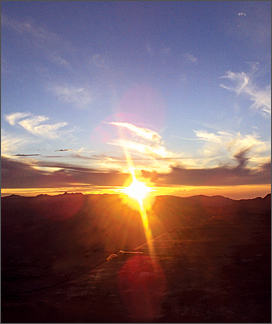Pioneer insights to Sri Pada – Part III
Continued from last week
 It is noted that Lawrie also presents some rare accounts of foreign
travellers, quoting from various sources. He sates: It is noted that Lawrie also presents some rare accounts of foreign
travellers, quoting from various sources. He sates:
In 1347 Ibn Batuta, a Moor, was carried by the south-west monsoon to
Ceylon. He was permitted to land at Battala (Putlam).... under the
protection of a Tamil king. He made the pilgrimage to the summit of
Adam’s Peak accompanied by four jyogees, who visited the footmark every
year, “four Brahmans, and ten of the king’s companions, with fifteen
attendants, carrying provisions...” In the ascent from Gampola to Adam’s
Peak he speaks of the monkeys with beards like men and of the fierce
leech which lurks on the trees and damp grass. He describes the trees
with leaves that never fall and the red roses of the rhododendrons.
At the foot of the last pinnacle, which crowns the summit of the
Peak, he found a minaret named after Alexander the Great; steps hewn out
of the rock, and iron pins, to which chains are appended, to assist the
pilgrims in their ascent; a well filled with fish; and last of all, on
the loftiest point of the mountain, the sacred footprint of the First
Man, into the hollow of which the pilgrims drop their offerings of gems
and gold. (Emerson Tennent, I,p. 604)
The reader comes to know that there had been a Buddhist monk who had
looked after the holy place, living in a small vihara on the summit.
This Buddhist monk in the customarily manner had been appointed by the
Maha Nayaka Theras, and was allowed to reside from November to May
during the season.
 |
|
The glorious sunrise at the top of the
sacred mountain. Picture by Lakshan Maduranga |
Lawrie had found an account of the ascent of the peak by one Sir
Vivian Majendie, written on January 1, 1896, from where he makes these
contracts:
“Then at the top, covering the footprint, is a little temple or
vihare, and a priest or two live up here in a small and very dirty hut;
and the pilgrims perform their devotions, and take their well-earned
rest; and about the shrine they suspend their touching simple little
votive offerings - pieces of calico, strings of cotton, flowers, and
little worthless ornaments, a few of which the priests allowed me to
take away... There is a bell here, and it is usual to toll once or
twice, or as often as you have made the ascent.
“The mountain presents another interest, and that is the opportunity
which it affords of witnessing the most glorious sunrise that it is
possible to conceive, illuminating an enormous tract of country - a
radius of some eighty miles, and stretching away in one direction out to
sea, and with this sunrise the wonderful and celebrated ‘Shadow of the
Peak’.
This is a shadow - due to the rising sun - of the Peak itself, and
which lies stretched over the misty land and sea for a great distance.
And as the sun rises the shadow seems itself to rise up as it were and
approach, and at last it suddenly topples over towards the spectator
like a ladder that has been reared beyond the vertical.
sunandamahendra@gmail. Com
Notes from the reign
* King Vimala Dhamma Suriya (1687-1707): “As
he believed that a pilgrimage on foot was an act of great merit, he
walked to the shrine at Samanakuta, and remained there for seven days,
holding a feast of offerings of jewels, pearls, and the like precious
things, and also of articles of gold and silver, and of divers cloths
and the like things. And he made an end of this great feast by covering
with a large silver umbrella the footprint which the great Sage had left
on the top of the mountain Samanakuta” (p. 334).
* King Narendra Sinha (1707-39): “The chief
of men, moved thereto by faith, went also on two occasions to Samanakuta,
and after he had made offerings there acquired merit: (p. 335).
* King Vijaha Sinha (1734-1747): “The lord
of the land caused all kinds of feasts, such as the feast of lamps and
the like, to be held at the noble footprint of the Supreme Buddha on
Samanakuta” (p. 342).
* King Kirti Sri (1747-1778): “Now that
wicked king who had become famous as Rajasinha of the city of Sitawaka,
and who had committed the crime of killing his father, and who had
destroyed the religion of the Conqueror by reason of his ignorance of
what was right, appointed heretics, whose false teaching he had
embraced, to take the revenues of the shrine of the sacred footprint of
Buddha at Samanakuta… (p. 307). |



